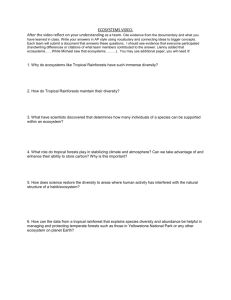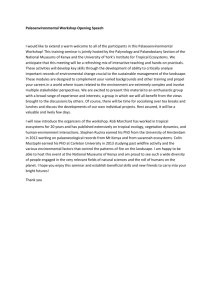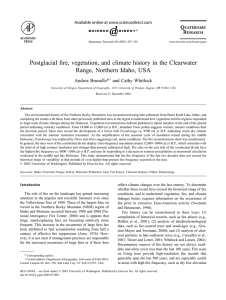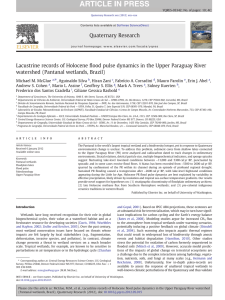Power et al.
advertisement
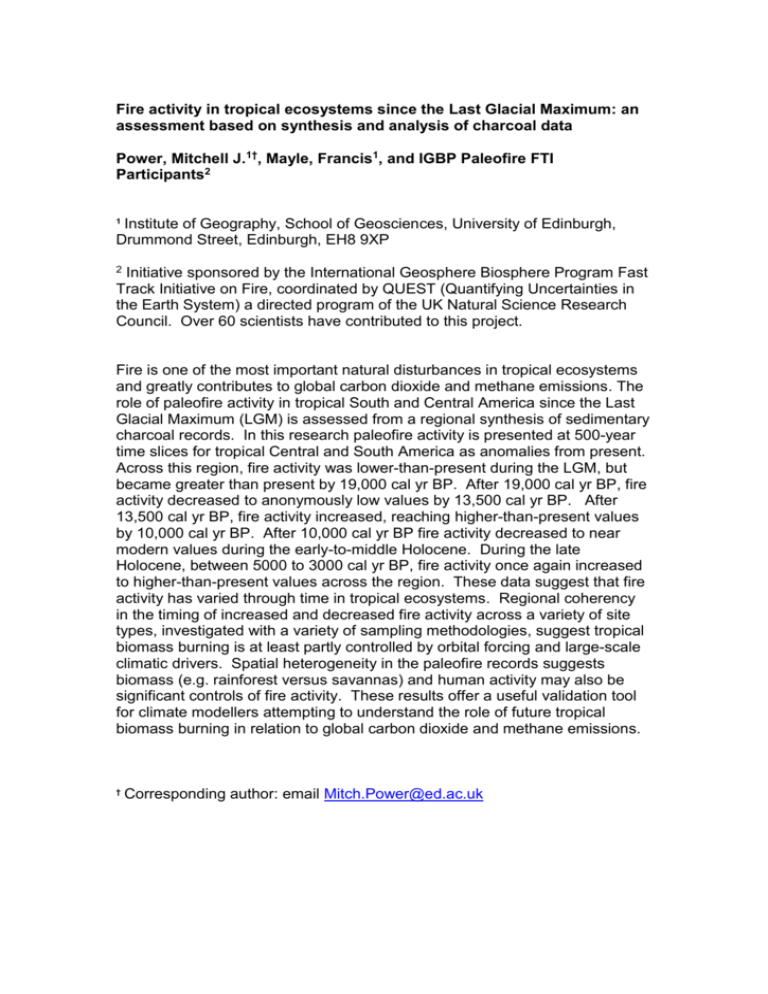
Fire activity in tropical ecosystems since the Last Glacial Maximum: an assessment based on synthesis and analysis of charcoal data Power, Mitchell J.1†, Mayle, Francis1, and IGBP Paleofire FTI Participants2 Institute of Geography, School of Geosciences, University of Edinburgh, Drummond Street, Edinburgh, EH8 9XP 1 2 Initiative sponsored by the International Geosphere Biosphere Program Fast Track Initiative on Fire, coordinated by QUEST (Quantifying Uncertainties in the Earth System) a directed program of the UK Natural Science Research Council. Over 60 scientists have contributed to this project. Fire is one of the most important natural disturbances in tropical ecosystems and greatly contributes to global carbon dioxide and methane emissions. The role of paleofire activity in tropical South and Central America since the Last Glacial Maximum (LGM) is assessed from a regional synthesis of sedimentary charcoal records. In this research paleofire activity is presented at 500-year time slices for tropical Central and South America as anomalies from present. Across this region, fire activity was lower-than-present during the LGM, but became greater than present by 19,000 cal yr BP. After 19,000 cal yr BP, fire activity decreased to anonymously low values by 13,500 cal yr BP. After 13,500 cal yr BP, fire activity increased, reaching higher-than-present values by 10,000 cal yr BP. After 10,000 cal yr BP fire activity decreased to near modern values during the early-to-middle Holocene. During the late Holocene, between 5000 to 3000 cal yr BP, fire activity once again increased to higher-than-present values across the region. These data suggest that fire activity has varied through time in tropical ecosystems. Regional coherency in the timing of increased and decreased fire activity across a variety of site types, investigated with a variety of sampling methodologies, suggest tropical biomass burning is at least partly controlled by orbital forcing and large-scale climatic drivers. Spatial heterogeneity in the paleofire records suggests biomass (e.g. rainforest versus savannas) and human activity may also be significant controls of fire activity. These results offer a useful validation tool for climate modellers attempting to understand the role of future tropical biomass burning in relation to global carbon dioxide and methane emissions. † Corresponding author: email Mitch.Power@ed.ac.uk
